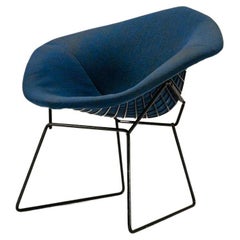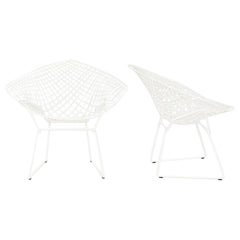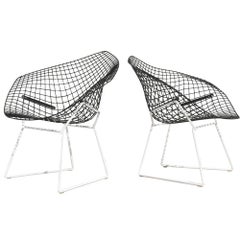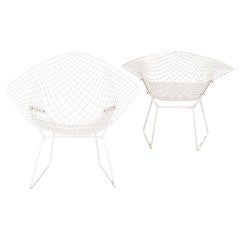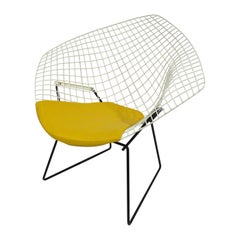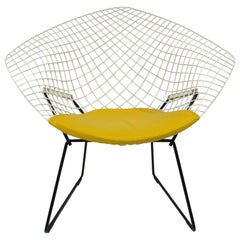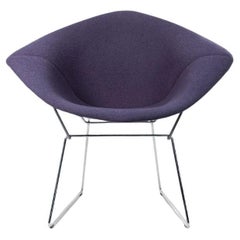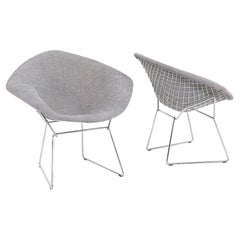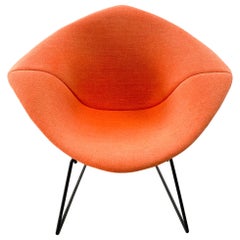Bertoia Diamond Lounge Chair
Vintage 1950s American Mid-Century Modern Lounge Chairs
Metal
2010s American Modern Lounge Chairs
Steel
Mid-20th Century North American Mid-Century Modern Lounge Chairs
Steel
Vintage 1980s American Modern Lounge Chairs
Steel
Mid-20th Century American Mid-Century Modern Lounge Chairs
Steel, Wire
Mid-20th Century American Mid-Century Modern Lounge Chairs
Steel, Wire
Early 2000s American Modern Lounge Chairs
Bouclé, Upholstery
2010s American Modern Lounge Chairs
Steel
Mid-20th Century American Mid-Century Modern Lounge Chairs
Steel
Early 2000s American Mid-Century Modern Lounge Chairs
Wire
Early 2000s North American Modern Lounge Chairs
Steel
Early 2000s American Modern Lounge Chairs
Steel
Early 2000s American Mid-Century Modern Lounge Chairs
Metal
Mid-20th Century Mid-Century Modern Lounge Chairs
Steel, Chrome
Mid-20th Century American Mid-Century Modern Lounge Chairs
Metal
Vintage 1970s Central American Mid-Century Modern Lounge Chairs
Metal
Vintage 1970s American Mid-Century Modern Lounge Chairs
Steel, Wire
Vintage 1970s American Mid-Century Modern Lounge Chairs
Metal
Vintage 1960s American Lounge Chairs
Metal
Mid-20th Century American Mid-Century Modern Lounge Chairs
Wire
Mid-20th Century American Mid-Century Modern Lounge Chairs
Chrome
Vintage 1950s American Mid-Century Modern Lounge Chairs
Metal, Chrome
Vintage 1960s American Modern Lounge Chairs
Steel
Vintage 1960s American Mid-Century Modern Lounge Chairs
Steel
Vintage 1950s American Mid-Century Modern Lounge Chairs
Metal
Mid-20th Century American Mid-Century Modern Lounge Chairs
Chrome
Mid-20th Century American Mid-Century Modern Lounge Chairs
Chrome
Vintage 1970s American Mid-Century Modern Lounge Chairs
Chrome
Vintage 1950s American Lounge Chairs
Steel
Vintage 1960s American Mid-Century Modern Chairs
Metal, Chrome
2010s American Modern Side Chairs
Steel
Mid-20th Century American Mid-Century Modern Chairs
Wire
Vintage 1950s American Mid-Century Modern Lounge Chairs
Metal
Vintage 1950s American Mid-Century Modern Lounge Chairs
Chrome, Steel
Late 20th Century American Mid-Century Modern Lounge Chairs
Steel
Vintage 1950s American Lounge Chairs
Metal
Vintage 1950s American Mid-Century Modern Lounge Chairs
Steel
Vintage 1960s American Mid-Century Modern Lounge Chairs
Metal
Vintage 1960s American Mid-Century Modern Lounge Chairs
Metal
Vintage 1970s American Mid-Century Modern Lounge Chairs
Metal
21st Century and Contemporary American Lounge Chairs
Vintage 1950s American Mid-Century Modern Lounge Chairs
Steel
Vintage 1960s North American Mid-Century Modern Lounge Chairs
Metal
Vintage 1960s American Modern Lounge Chairs
Chrome
Vintage 1950s American Lounge Chairs
Vintage 1970s American Furniture
Steel
Vintage 1960s American Mid-Century Modern Lounge Chairs
Iron
Vintage 1960s Lounge Chairs
Vintage 1950s American Mid-Century Modern Lounge Chairs
Mid-20th Century American Modern Lounge Chairs
1990s Mid-Century Modern Lounge Chairs
Mid-20th Century American Mid-Century Modern Lounge Chairs
Steel, Wire
Mid-20th Century American Lounge Chairs
Vintage 1970s American Lounge Chairs
Chrome
Mid-20th Century American Lounge Chairs
Vintage 1970s German Mid-Century Modern Lounge Chairs
Metal
Vintage 1970s German Mid-Century Modern Lounge Chairs
Chrome
Mid-20th Century American Mid-Century Modern Lounge Chairs
Steel
Mid-20th Century American Mid-Century Modern Lounge Chairs
Steel
Vintage 1960s American Mid-Century Modern Lounge Chairs
Wire
- 1
Bertoia Diamond Lounge Chair For Sale on 1stDibs
How Much is a Bertoia Diamond Lounge Chair?
Harry Bertoia for sale on 1stDibs
Sculptor, furniture and jewelry designer, graphic artist and metalsmith, Harry Bertoia was one of the great cross-disciplinarians of 20th-century art and design and a central figure in American mid-century modernism. Among furniture aficionados, Bertoia is known for his chairs such as the wire-lattice Diamond chair (and its variants such as the tall-backed Bird chair) designed for Knoll Inc. and first released in 1952.
As an artist, he is revered for a style that was his alone. Bertoia’s metal sculptures are by turns expressive and austere, powerful and subtle, intimate in scale and monumental. All embody a tension between the intricacy and precision of Bertoia’s forms and the raw strength of his materials: steel, brass, bronze and copper.
Fortune seemed to guide Bertoia’s artistic development. Born in northeastern Italy, Bertoia immigrated to the United States at age 15, joining an older brother in Detroit. He studied drawing and metalworking in the gifted student program at Cass Technical High School. Recognition led to awards that culminated, in 1937, in a teaching scholarship to attend the Cranbrook Academy of Art in suburban Bloomfield Hills, one of the great crucibles of modernism in America.
At Cranbrook, Bertoia made friendships — with architect Eero Saarinen, designers Charles and Ray Eames and Florence Schust Knoll and others — that shaped the course of his life. He taught metalworking at the school, and when materials rationing during World War II limited the availability of metals, Bertoia focused on jewelry design. He also experimented with monotype printmaking, and 19 of his earliest efforts were bought by the Guggenheim Museum.
In 1943, he left Cranbrook to work in California with the Eameses, helping them develop their now-famed plywood furniture. (Bertoia received scant credit.) Late in that decade, Florence and Hans Knoll persuaded him to move east and join Knoll Inc. His chairs became and remain perennial bestsellers. Royalties allowed Bertoia to devote himself full-time to metal sculpture, a medium he began to explore in earnest in 1947.
By the early 1950s Bertoia was receiving commissions for large-scale works from architects — the first came via Saarinen — as he refined his aesthetic vocabulary into two distinct skeins. One comprises his “sounding sculptures” — gongs and “Sonambient” groupings of rods that strike together and chime when touched by hand or by the wind. The other genre encompasses Bertoia’s naturalistic works: abstract sculptures that suggest bushes, flower petals, leaves, dandelions or sprays of grass.
As you will see on these pages, Harry Bertoia was truly unique; his art and designs manifest a wholly singular combination of delicacy and strength.
Find vintage Harry Bertoia sculptures, armchairs, benches and other furniture and art on 1stDibs.
Finding the Right Lounge-chairs for You
While this specific seating is known to all for its comfort and familiar form, the history of how your favorite antique or vintage lounge chair came to be is slightly more ambiguous.
Although there are rare armchairs dating back as far as the 17th century, some believe that the origins of the first official “lounge chair” are tied to Hungarian modernist designer-architect Marcel Breuer. Sure, Breuer wasn’t exactly reinventing the wheel when he introduced the Wassily lounge chair in 1925, but his seat was indeed revolutionary for its integration of bent tubular steel.
Officially, a lounge chair is simply defined as a “comfortable armchair,” which allows for the shape and material of the furnishings to be extremely diverse. Whether or not chaise longues make the cut for this category is a matter of frequent debate.
The Eames lounge chair, on the other hand, has come to define somewhat of a universal perception of what a lounge chair can be. Introduced in 1956, the Eames lounger (and its partner in cozy, the ottoman) quickly became staples in television shows, prestigious office buildings and sumptuous living rooms. Venerable American mid-century modern designers Charles and Ray Eames intended for it to be the peak of luxury, which they knew meant taking furniture to the next level of style and comfort. Their chair inspired many modern interpretations of the lounge — as well as numerous copies.
On 1stDibs, find a broad range of unique lounge chairs that includes everything from antique Victorian-era seating to vintage mid-century modern lounge chairs by craftspersons such as Hans Wegner to contemporary choices from today’s innovative designers.
